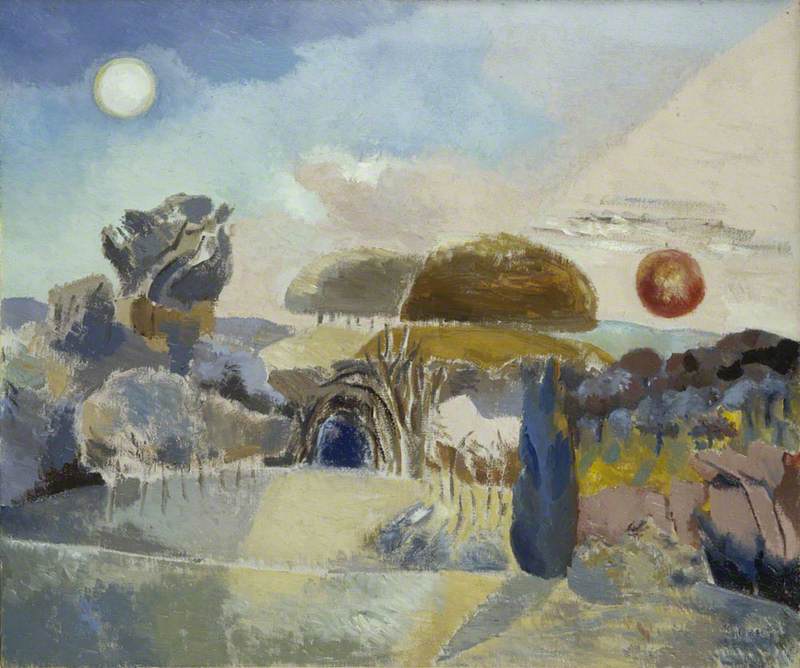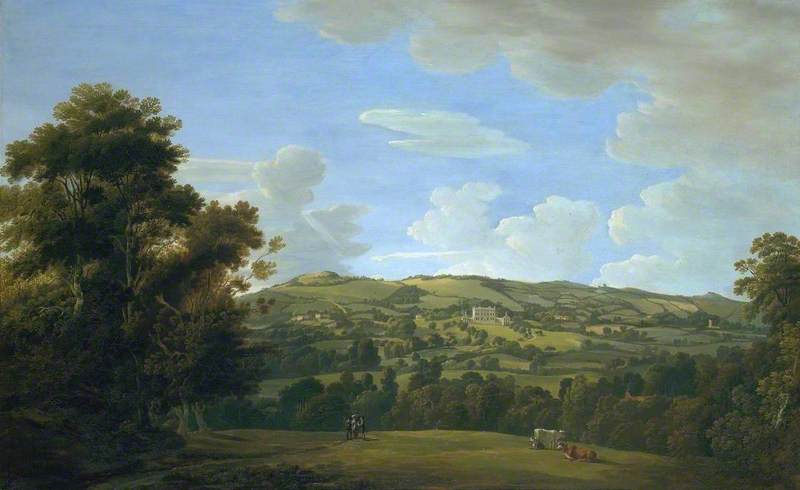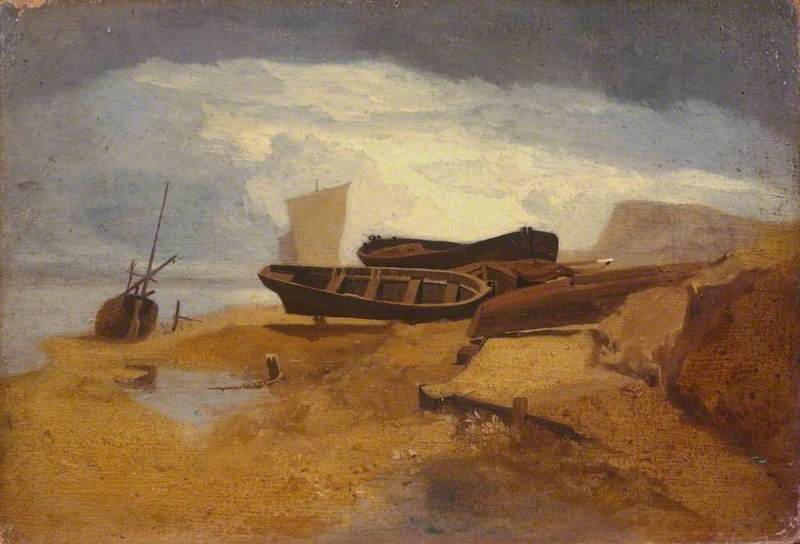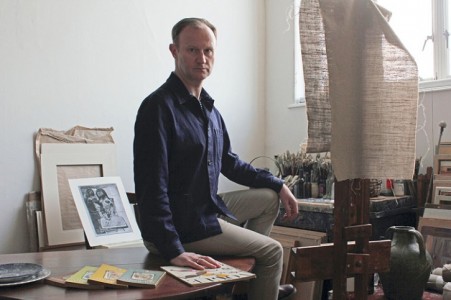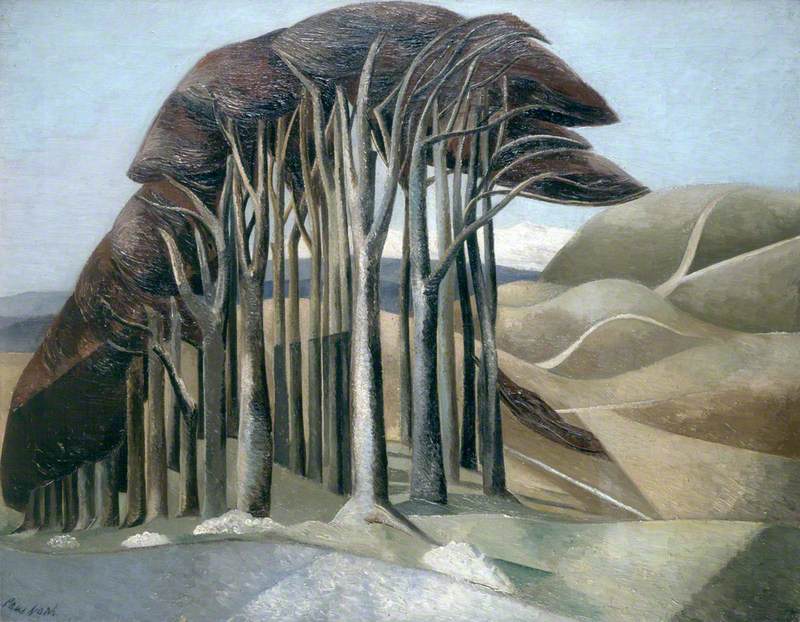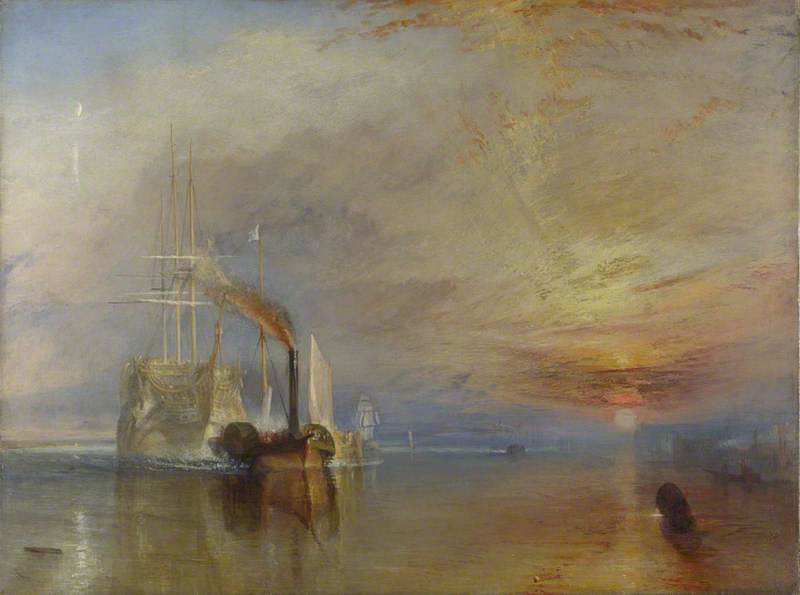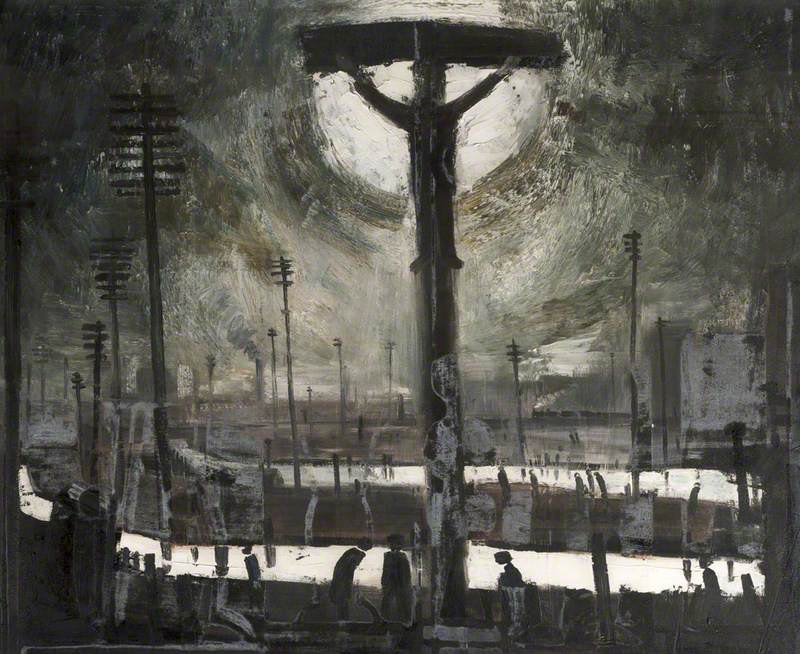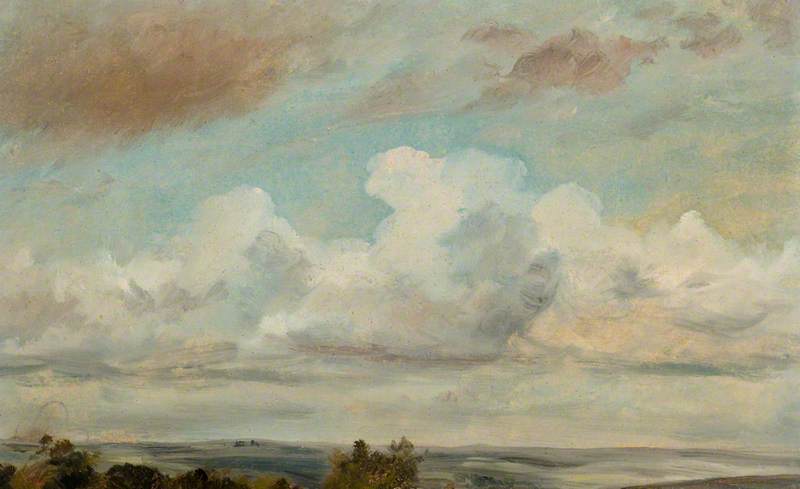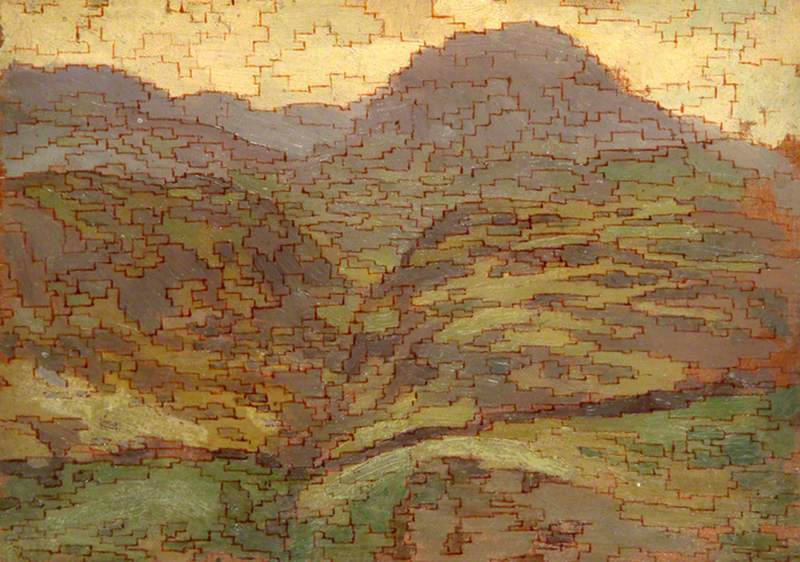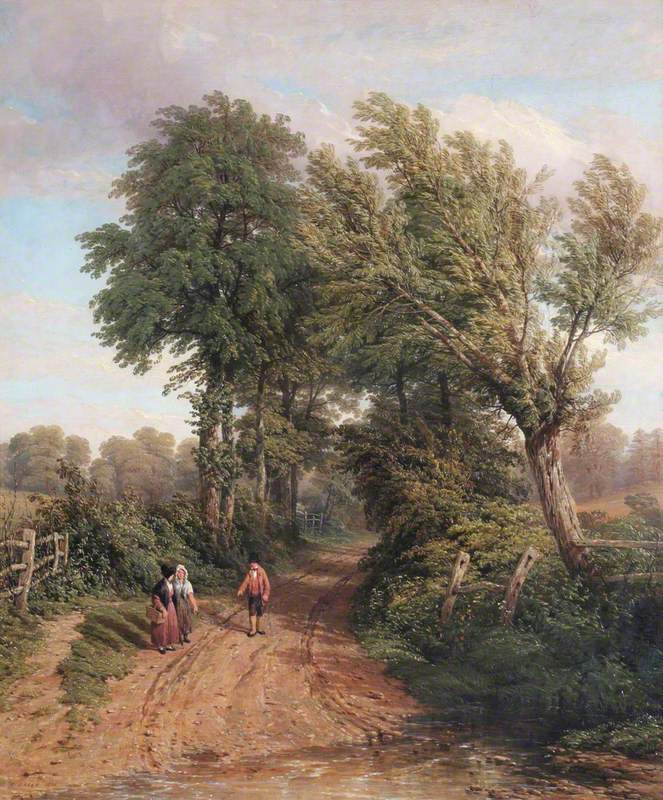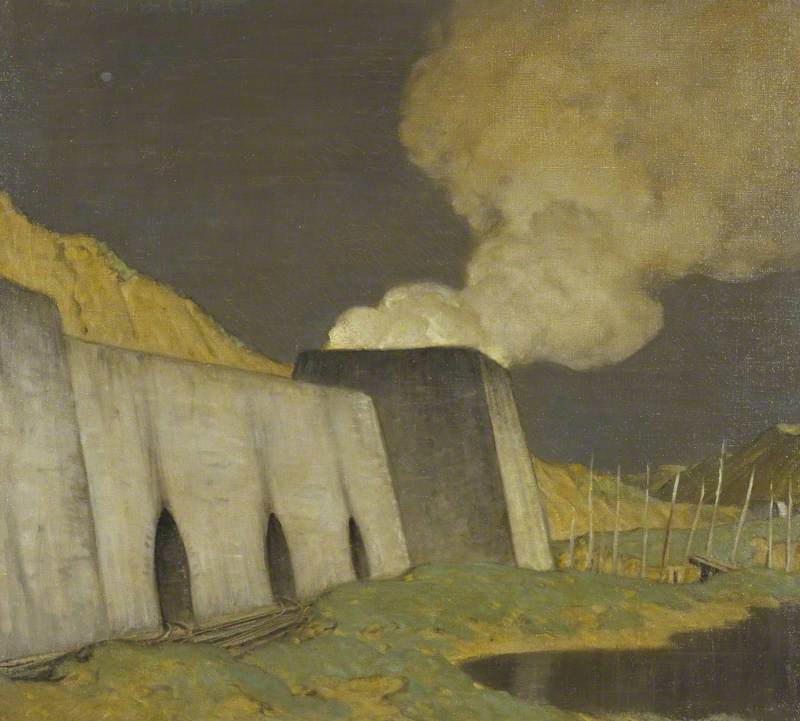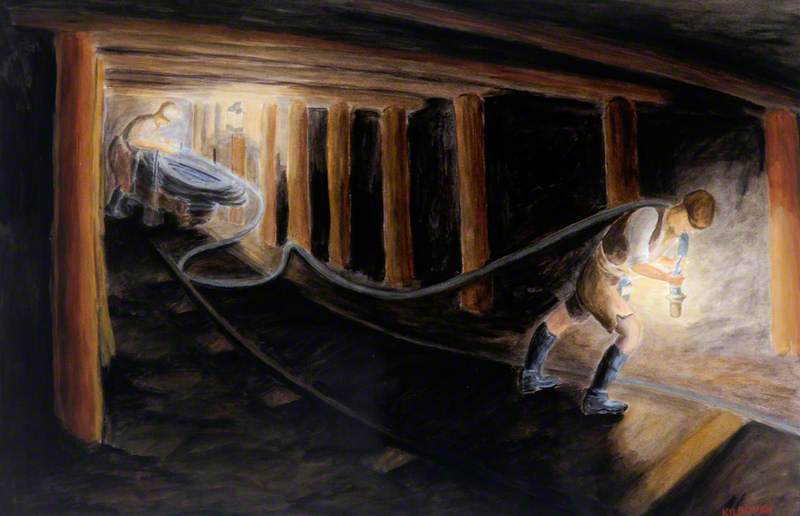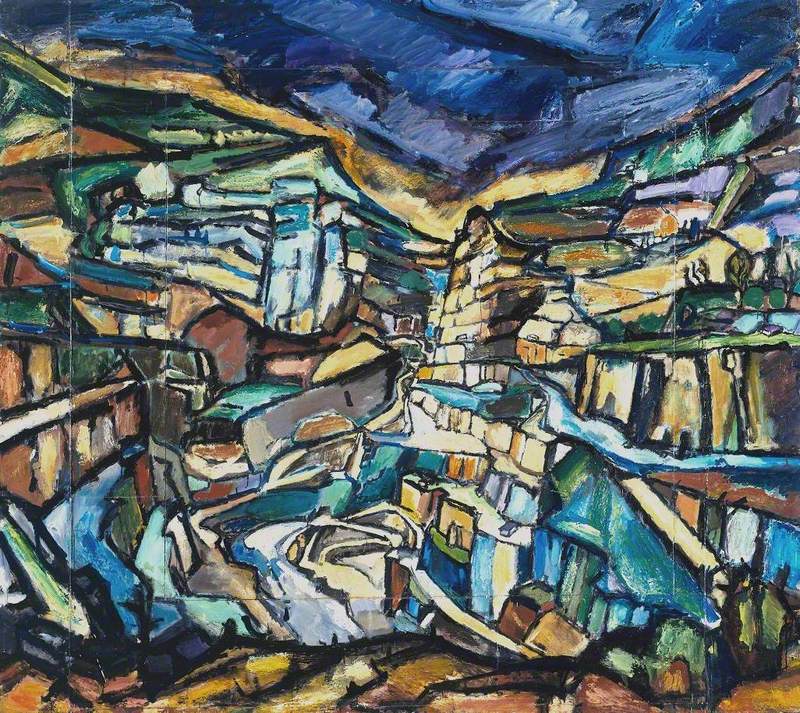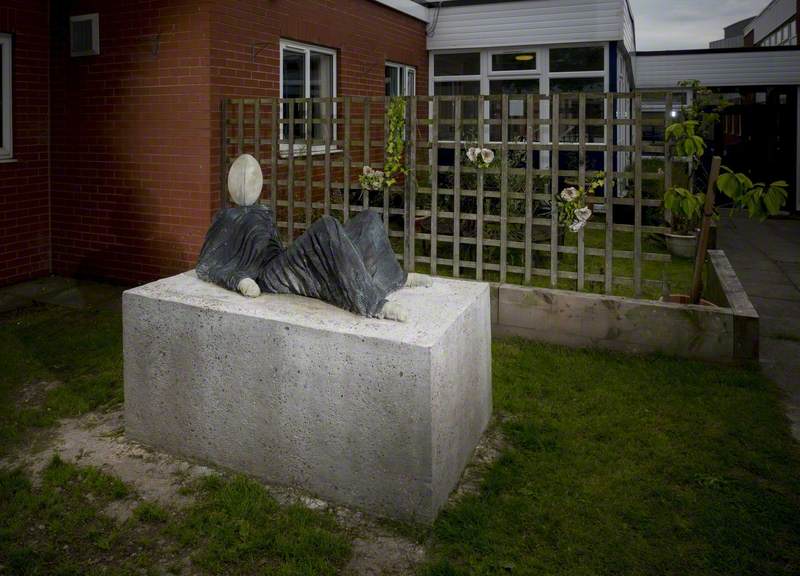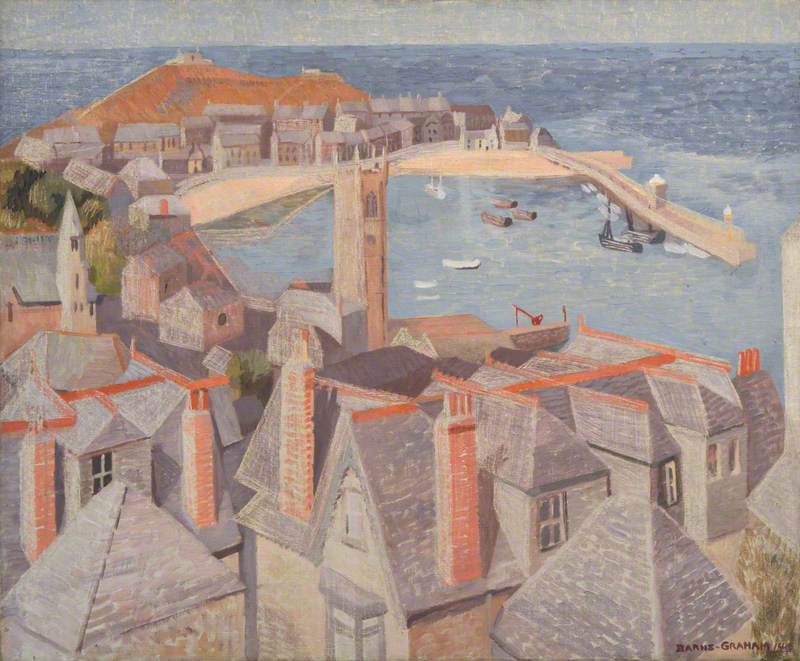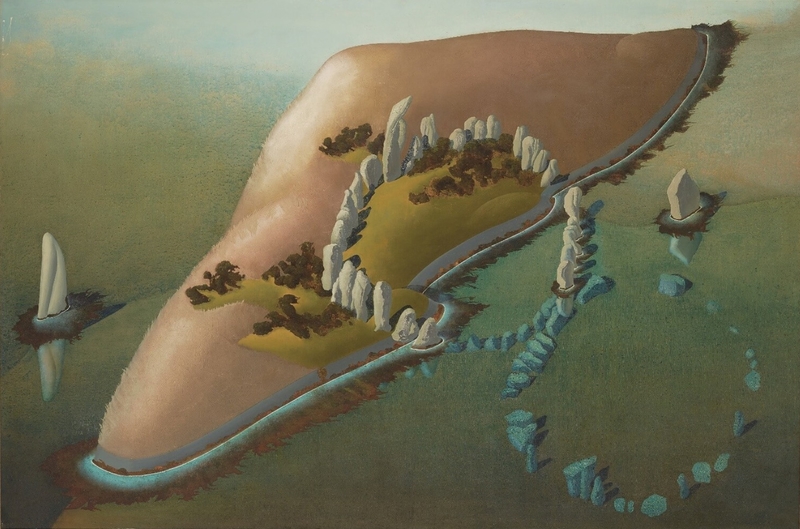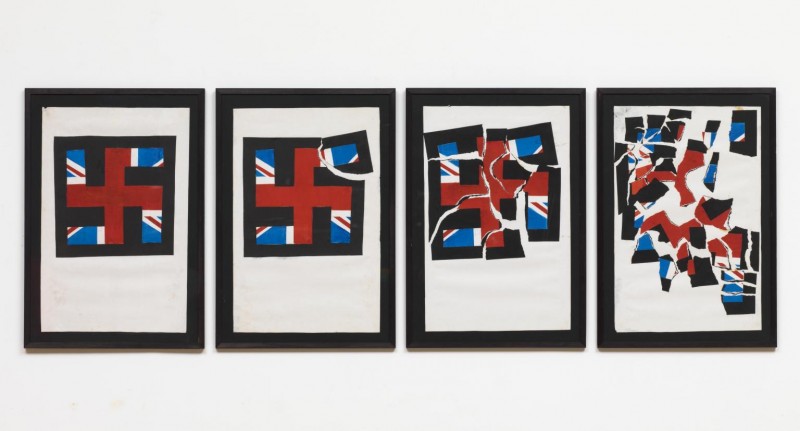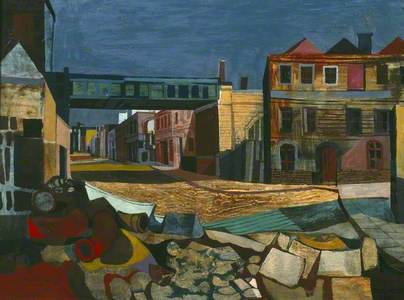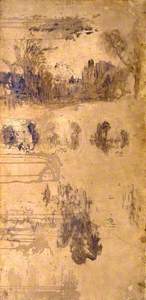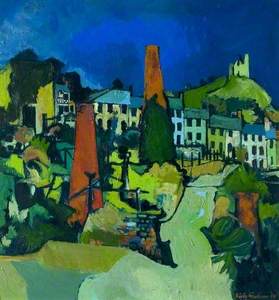In the 1960s my parents became friendly with the painter Rigby Graham (1931–2015) and his wife Pat, through a shared interest in private press work.
Some years later they purchased a painting from his 1966 exhibition at the Gadsby Gallery, Leicester. This was The Red Field – a stern vertical landscape, of what Rigby himself described as 'a most unusual and illogical composition', in deep fir greens and burnt orange, with patchwork fields (including the red one) and sun setting behind, and a Roman-straight road, high bordered by fiercely jagged slate walls. The painting followed us to the brighter skies of the West Indies, New Zealand and back – and for me, its winter-bare trees marching along the ridgetops always brought back the sense of our Leicestershire home.
Turbulent Landscape, Dorset
1966
Rigby Graham (1931–2015) 
Mischievous, irascible, at times trenchant, Rigby Graham was not altogether a comfortable friend: his letter to my father, which accompanied the painting, described The Red Field as 'a particularly rare example of Graham c.1960 vintage' adding that 'most other examples of this period have unfortunately and understandably been destroyed normally in a rage because of people like you who won't pay up. – 30 gns.'
If Graham took a lighthearted approach to letter-writing (and my father, I should add, was scrupulous in paying his accounts), about his artwork he was deadly serious, spending a lifetime in and out of doors, in all weathers, in pursuit of the landscape. When at the age of 84 he became too frail finally to rise from his bed, he continued to engrave woodblocks from his prone position, scattering their inky chippings across his sheets.
Born in Stretford, Manchester, in 1931, Rigby Graham moved to Leicester at the age of 13, after having followed his rather eccentric father Richard's Customs & Excise postings around the British Isles. Though later travelling frequently, Rigby made his home in Leicestershire for the rest of his life, becoming, as an artist, closely identified with that county. His Scottish mother Ellen came from Mull, and the family contacts there enabled the young Rigby to visit, in his youth, hitching up to spend his days exploring the islands and swimming, as he put it, like 'an overgrown newt'.
From 1943 Graham attended Leicester's Wyggeston Grammar, overlapping with David Attenborough, then in the sixth form (his elder brother Richard had already left). He was a reluctant schoolboy, but a keen student of the surrounding landscape, drawn to its sensory experiences: the light, the 'living lines' of trees, the structures of industrial and agricultural machinery and buildings, of the Midland towns, villages and fields. Over time this appreciation was honed to an artistic one, and, already a keen traveller, he spent time during his school years sketching in Germany, Switzerland and France. Visiting Ireland for the first time in 1948, and sleeping rough, he fell in love with its landscape – an enthusiasm long shared by his father. Rigby revisited the island regularly, to paint its ruins and castles and write postcards home to Murphy, his Great Dane.
In 1949 he enrolled at Leicester College of Art and Design, specialising in mural painting, but exploring a wide variety of media including printmaking and book illustration as well as drawing and painting. His interest in book work stemmed from his childhood, having grown up, as he said, in a home 'full of drink and books even if there wasn't very much food' (Irish Journey, 2001). At Leicester, his tutors included Donald P. Carrington, the engraver Cyril Satorsky, and Eric Hall, who during the war had worked in the Camouflage division of the Home Office, whose influence can all be felt on his work.
One detects too the influence, stylistically, in content and often in tone, of the work of his near contemporaries: Paul Nash, for example in his Landscape of the Vernal Equinox (III) (1944), and perhaps more explicitly, the spiky stylisations of Graham Sutherland, such as his Flying Bomb Depot (verso) (1945) and John Minton's Street and Railway Bridge (1946).
Flying Bomb Depot
(verso) 1945
Graham Vivian Sutherland (1903–1980) 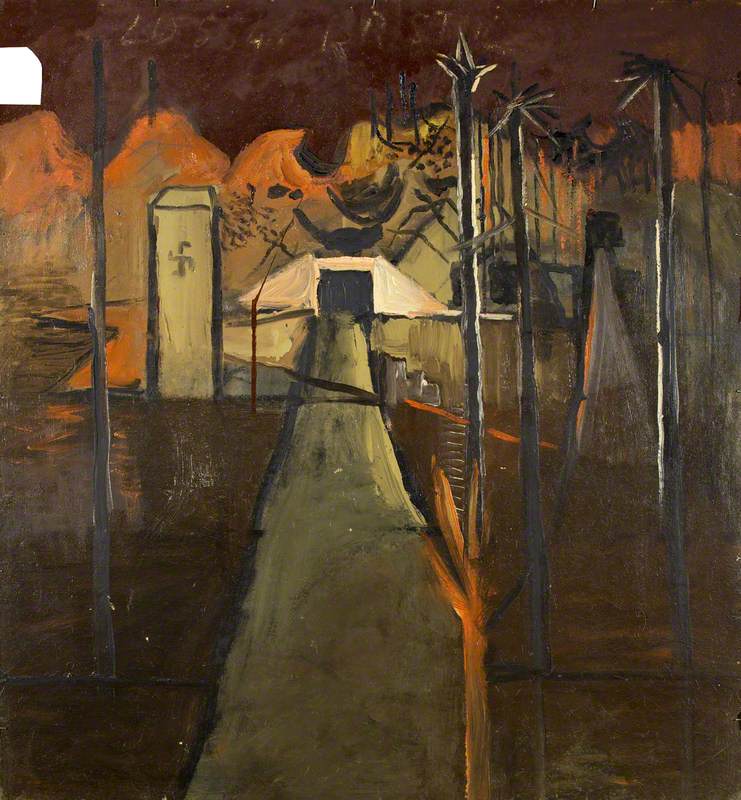
Beyond these Graham's influences reach back, to the great landscape traditions of British painting and the work of Francis Towne, John Sell Cotman, and J. M. W. Turner.
'Turner and Cotman talk to me from the clouds', Graham said. He maintained a lifelong enthusiasm for painting and drawing outside, finding the medium of watercolour, particularly, in sympathy with the dampness of the north European landscape.
In 1953 Graham married Patricia Green, and held his first exhibition (at the Denbigh Arms, Lutterworth). In the late 1950s, he returned to Leicester College as a tutor of printing and graphic design. He described being 'involved with art' as 'a great privilege' and if occasionally regretting the loss of painting time, he was grateful for the steady income, saying of his 30 years' teaching, 'it made me independent and cussed – and that's proved to be very helpful.'
Outside of the classroom, Graham was hugely prolific, working with a wide range of media, making paintings, drawings and prints (both one-off pieces and limited editions), patterned papers and murals late into his life. At Leicester he became heavily involved with book arts, writing for The Private Press and The American Book Collector, among others. He collaborated with many private presses, writing and illustrating, in particular, the Brewhouse Press run by local historian and bookbinder Trevor Hickman. Among his many publications in 1959 Graham illustrated The Private Press At Gregynog, Michael Davies' account of the press founded in 1922 by art patrons Margaret and Gwendoline Davies, at their home in Gregynog Hall (now home to many fine collections).
The same year (1959) Graham spent time painting in Sicily. This was followed by working holidays to Corsica, Crete, Malta, Yugoslavia and elsewhere, as well as further trips to Ireland and around Britain. He often marked these visits in publications such as An Alderney Afternoon (1970) and Deserted Cornish Tin Mines (1975).
From 1963 onwards Graham exhibited regularly at the Gadsby Gallery in Leicester (owned by the longstanding framer and art-suppliers W. F. Gadsby) and elsewhere around the Midlands. Since his first show with them in 1987 Uppingham's fine Goldmark Gallery have also enthusiastically promoted his work, producing a short film about him, Rigby Graham's Irish Voyage, in 2001.
Despite this, Graham never really received the wider critical attention his work deserves, instead attracting a small loyal band of followers.
The artist John Piper, whom Graham met at Fawley Bottom in 1968, was an admirer, writing of Graham's 'unusual and indeed enviable capacity to make romantic and dramatic images out of simple scenes'. As a topographical artist Graham was highly informed about the landscapes he painted: Frances Spalding praised him as having 'ten times as much to say' as some of his better-known contemporaries, saying 'It is Graham and not Rowland Hillier to whom historians will turn in future years to find out the look of the late twentieth-century landscape.'
Cornish Landscape with Lime Workings
1969
Rigby Graham (1931–2015) 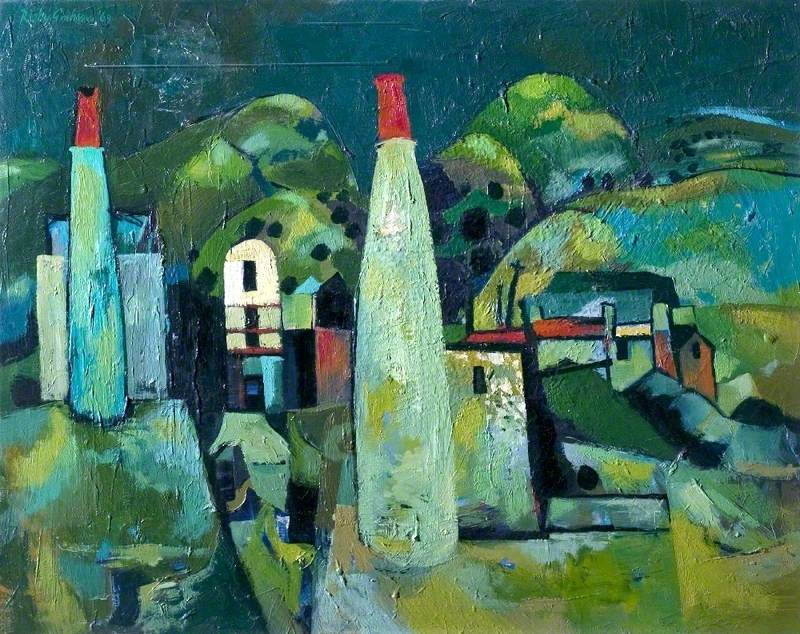
Graham was pre-eminently a painter of Leicestershire, producing a folio of local landscapes for Frank Gadsby and printed at the Sycamore Press, Leicester, in 1980. In 1992 he participated in a documentary for Anglian television on another lover of the local landscape, the poet John Clare (having illustrated an edition of Clare's Lines Written In Northampton County Asylum in 1959). Among those of his works which Leicestershire County Council purchased for their own collection are his Cornish Landscape with Lime Workings and Mine Workings, East Cornwall (both 1969).
Mine Workings, East Cornwall
1969
Rigby Graham (1931–2015) 
In recognition of his importance to the county, in 1999 New Walk Museum held a retrospective of Graham's work, and in 2008 he was made Doctor of Letters by the University of Leicester, where he had taught for so many years.
Sitting on Skellig Michael in 2001 and reflecting on his life's work for the Goldmark film, Rigby Graham said 'I hope that some people might get from them some of the excitement and pleasure and thought and enjoyment that I have experienced in sitting in some of these places... I hope that something of what I have tried to point out causes a similar response in the spectator. If it does then I've achieved something. If it doesn't then I don't suppose it matters, at all.'
Sara Ayad, independent art researcher
